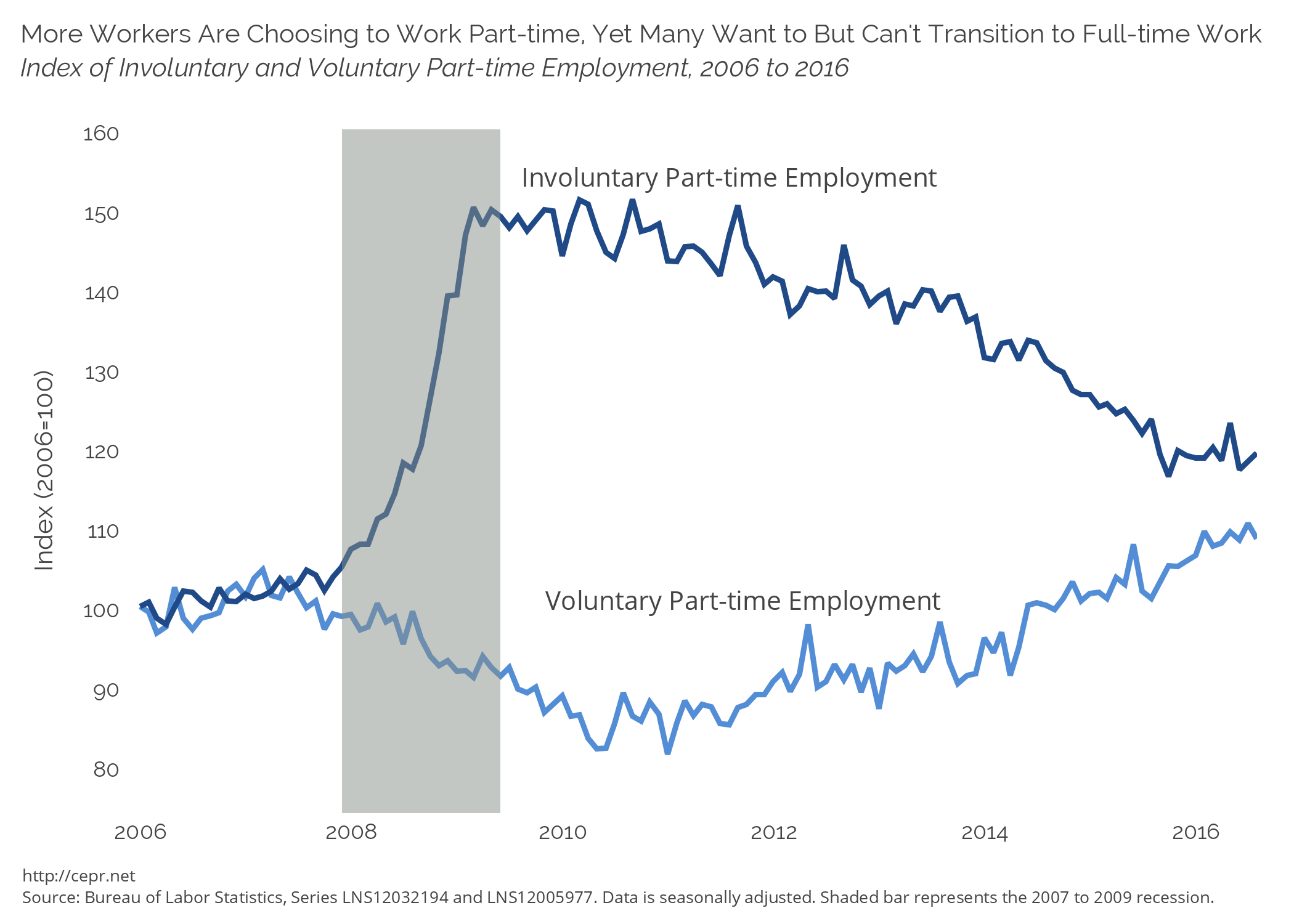September 02, 2016
September 2, 2016 (Jobs Byte)
By Dean Baker
The decline in hours led to 0.2 percent drop in average weekly earnings in August.
The Labor Department reported that the economy created 151,000 new jobs in August — slightly less than generally expected. The unemployment rate was unchanged at 4.9 percent and the employment-to-population ratio (EPOP) was also unchanged.
The big job gainers in August were restaurants, which added 34,000 jobs; government, which added 25,000 (almost all at the local level); and social assistance, which added 21,700 jobs. Mining continued to lose jobs, with a drop of 4,300 in August, while manufacturing lost 14,000. The drop in manufacturing was largely attributable to the loss of 5,600 jobs in auto manufacturing, reversing a gain of roughly the same size for July.
The gains in the government sector were largely driven by a reported 11,700 increase in employment in local education. This is likely a seasonal effect. Local government education has increased employment by 59,000 jobs over the last three months, after showing no gain over the year from May 2015 to May 2016. This could mean a large fall reported for September. (There was a reported drop of 30,700 in local government education jobs last September.) The jump in social assistance jobs is also out of line with its 9,400 rate of growth over the last year.
On the other side, the 14,400 new jobs reported in health care are well below the monthly pace of 36,900 over the last year. The 15,100 jobs reported in retail are also below the 24,500 average for the last year.
While the overall pace of job growth is still reasonably healthy even with the slowdown, a disconcerting item is a decline in the duration of the average workweek. This stood 34.3 hours in August, down from 34.4 hours in July and 34.6 hours in August of 2015. The drop was large enough to lead to a decline of 0.2 percent in the index of aggregate weekly hours, in spite of the growth in employment.
This downward trend could indicate slower hiring in the future. It also seems to contradict the common assertion in the business press that employers are having difficulty finding qualified workers. If this were true, they would be pushing the workers they have to work longer hours.
Wage growth also shows no evidence of accelerating. The average hourly wage increased by 2.4 percent over the last year. Over the last three months, compared with the prior three months, the average hourly wage increased at a 2.5 percent annual rate.
On the household side, the news was mostly positive. There was an increase in the percentage of unemployment due to voluntary quits to 11.3 percent. Although this is the highest level for the recovery, it’s a full percentage point below the pre-recession peak and almost 4.0 percentage points below the peak reached in 2000.
All the duration measures of unemployment fell in the month. With the mean duration of unemployment spells dropping by 0.5 weeks to 27.6 weeks and the median duration falling by 0.4 weeks to 11.2 weeks. And there was a rise in the percentage of black teens with jobs to 23.3 percent, an increase of 2.7 percentage points from the July figure and a new high for the recovery.
There was an increase of 113,000 in the number of people involuntarily working part-time, although this figure is still down by 428,000 from the year ago level. The number choosing to work part-time dropped in August, but is still up by 751,000 from last year’s level.

While the overall EPOP was unchanged in August, the EPOP for prime age workers (ages 25–54) edged down by 0.2 percentage points to 77.8 percent. This puts it 2.5 percentage points below its pre-recession peak and more than four full percentage points below the 2000 peak.
On the whole the August report suggests a moderately healthy labor market, but one that is not reaching any constraints. With the EPOP still well below pre-recession levels, there are still many potential workers who would like jobs. Similarly, the recent drop in hours suggests that firms are not straining to find workers as does the data showing wage growth is maintaining a moderate pace.






